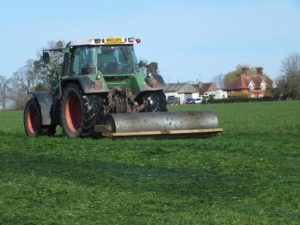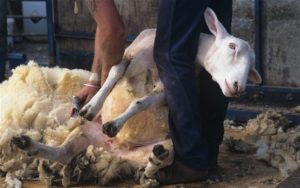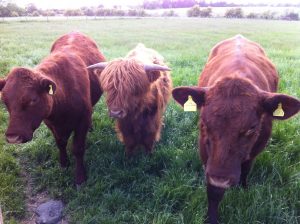Down on the Farm – May 2017
With lambing well and truly out the way, things have settled down again to a more routine time on the farm. Overall, lambing has gone well, the decent weather during April has meant that the ewes could be turned out with their lambs quite quickly without having to be inside for too long. This is a huge help both in terms of workload but also in keeping down health problems and infections. No matter how careful we are, there is always a build-up of bacteria and potential infection when you have livestock housed. It’s always better for the sheep to be out in the fresh air and with the “sun on their backs” as the older shepherds always recommend. The grass growth has been fairly early this year as well so they have all gone onto decent pastures. This helps the lambs thrive better as the ewes always seem to produce better milk when they are eating largely grass as opposed to hay or supplementary feed. We will keep feeding some barley ration to them though to make sure they don’t lose too much condition during lactation. We have managed to get all of the hog lambs clipped early and they are now in the paddocks at the farm shop Next job will be doing the breeding ewes – we will try to get this all done by June to keep any fly issues to a minimum.
The current dry spell means we are going to start needing rain now to keep growth going both for the livestock and for the fields we are closing up for silage in a few weeks time. The silage fields have been rolled to knock any smaller stones back down to keep them out of the way of the mower blades later on – anything bigger gets picked up and dropped in the dyke backs. Natural movements, or “heave” of the soil during winter caused by moisture, frost etc gradually bring stones to the surface so this is something we need to do each year. The silage fields have already had their first application of fertilizer – now they need warmer and slightly damper weather to get going.
The arable crops have all come through the winter OK – even a couple of fields that were very late sown have thickened out now and started to catch up with the earlier ones. Again, they are starting to feel the effects of the last few weeks without rain and some of the leaves are starting to look a bit yellow and dry, especially in the fields that are more exposed to wind. The fertilizer has been put on though so as soon as it gets damp they should motor ahead again. We will need to keep a close eye on pests and diseases this year as the mild winter means that they are less likely to have been killed off. We have a specialist who walks the crops on a regular basis and gives us recommendations on the best treatment for any problems. We try to keep any applications to a minimum both for environmental and cost reasons.
The cattle are virtually all back out again with the normal rodeo antics when they get to come out of the buildings. They soon settle down though and within an hour they are all heads down at the fresh grass. This then lets us get all the sheds mucked out and the manure stacked ready for spreading later in the year when it has rotted down a bit. Once the cattle are all out then the daily workload of feeding and bedding reduces dramatically so the lads can start to concentrate on other things. There is always a backlog of maintenance jobs to do after winter – occasionally we even manage to get half of them done before it gets busy again!!
We had a great turnout again for the lamb feeding at the farm shop at Easter – hopefully everyone had a good time. The lambs were a bit older this time so there was certainly plenty of milk being guzzled down.



